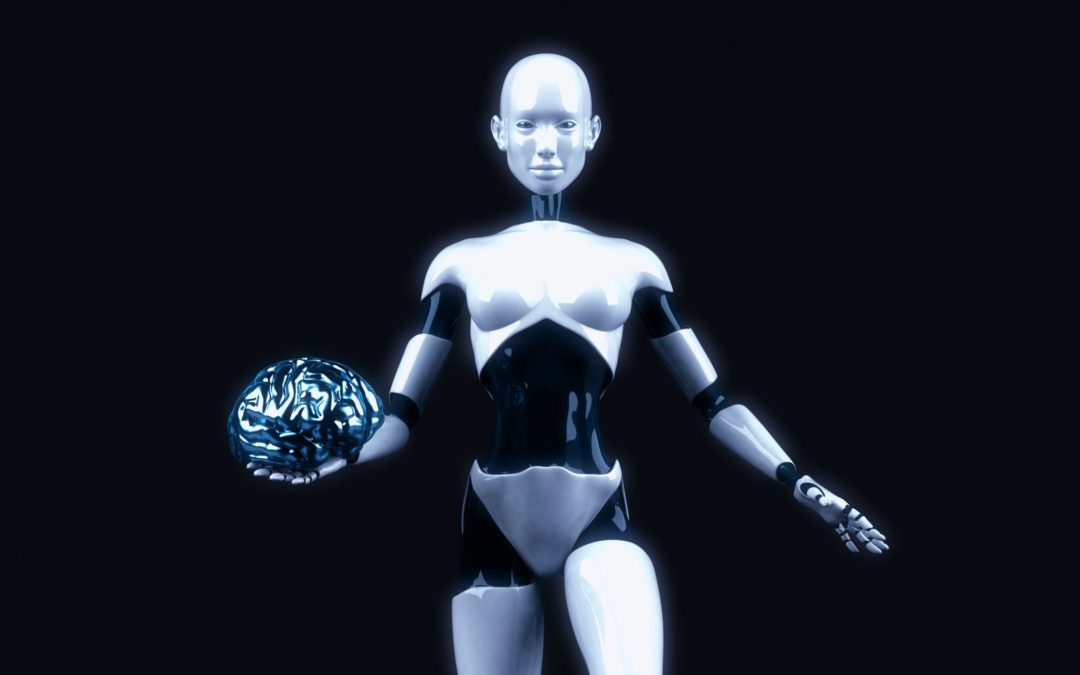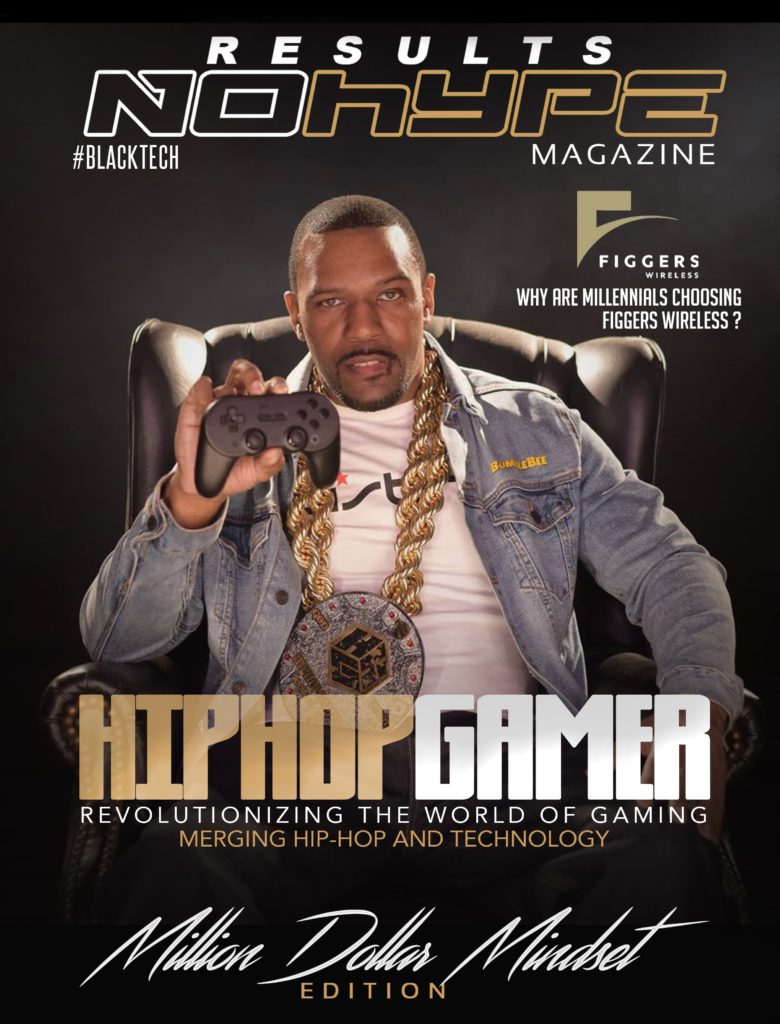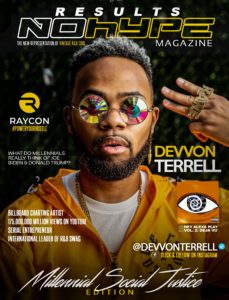
by Pharron Fields | Sep 20, 2023 | Latest, Social Justice |
Photo by Robert Linder on Unsplash
In the world of music and legal drama, the news about YSL Polo, a popular figure in the hip-hop industry, no longer facing RICO charges has created significant waves. This news comes as a relief to his fans and followers who have been following the case closely. Let’s delve deep into the story and understand the factors leading to this outcome.
Who is YSL Polo?
Originally named Cordarius Dorsey, YSL Polo is a recognized name in the hip-hop industry. He’s known for his unique style and lyrical prowess, making him a popular figure among music lovers. However, his life took a turn when he was indicted with racketeering and gang charges as part of the YSL RICO trial.
The Initial RICO Charges
In the sphere of legal terminology, RICO charges refer to accusations under the Racketeer Influenced and Corrupt Organizations Act. This law is designed to combat organized crime in the United States. It allows for the leaders of a syndicate to be tried for crimes they ordered others to carry out or assisted in executing.
YSL Polo, along with several other individuals, was indicted with these charges. The allegations were severe, and the case attracted significant attention from media outlets and the public.
The Twist in the Case
In a surprising turn of events, the prosecutors decided against pursuing the charges against YSL Polo. This decision was reported by the reputable Atlanta Journal-Constitution. The reason behind this choice was Polo’s current life sentence on murder charges.
Adriana Love, the Prosecutor handling the case, revealed that the district attorney’s office planned to “nolle pros” the charges against Polo in the RICO case. This legal term indicates the prosecutor’s decision to voluntarily discontinue criminal charges either before trial or before a verdict is rendered.
The Reason for Dismissal
The key reason behind the dismissal of the RICO charges against YSL Polo was his existing life sentence. Polo is currently serving a life sentence for the murder of a 44-year-old man, Xavier Turner, in January 2020. The incident was caught on camera, and the evidence led to his conviction.
Given that Polo is already serving a life sentence without the possibility of parole, the prosecutors decided that pursuing additional charges would not be beneficial. As Prosecutor Love stated, the charges were dropped “in the interest of judicial economy and efficiency.”
YSL Polo’s Legal Journey
It’s important to note that Polo has been involved in multiple legal troubles. Prior to the murder charge, he was already serving a life sentence for his involvement in a 2019 murder. Both instances saw him captured on video evidence, which played a significant role in his convictions.
The Impact on YSL RICO Trial
With YSL Polo no longer part of the RICO case against the alleged YSL gang, the number of defendants has reduced to seven. Initially, the indictment involved 28 people, including other famous figures like Gunna, who later accepted a plea deal.
The Future of the Case
While Polo’s charges have been dropped, the trial is far from over. The case still involves other prominent figures, including Young Thug. As of now, there’s no clear end in sight for the trial. Fans and followers of these artists, as well as legal enthusiasts, continue to monitor the proceedings closely.
A Case of Social Justice?
The dismissal of the RICO charges against YSL Polo has stirred conversations about social justice. Many argue that the decision was just, considering Polo is already serving a life sentence. However, others believe that every crime should be accounted for, regardless of existing sentences.
The Music Industry’s Reaction
The music industry has shown mixed reactions to the news. Some have expressed relief and support for Polo, while others are more reserved, waiting for the final outcome of the ongoing trial.
Conclusion
The dismissal of RICO charges against YSL Polo is a significant development in the YSL RICO trial. As the case continues, it remains to be seen what further twists and turns will occur. For now, Polo, his fans, and followers can breathe a sigh of relief, even if his legal troubles are far from over.

by Minnee | Sep 15, 2023 | Latest, Music News, New Music Alert |
Image credit: Franklin Sheard Jr / Shutterstock.com
On September 9, Gunna, a well-known figure in the music industry, staged a memorable performance at Barclays Center, located in the heart of Brooklyn. This marked the rapper’s first appearance on stage following his release from jail in December of 2022. Notably, during the performance, the rapper, known for his hit “fukumean,” made a rallying cry for the release of Young Thug, visually reinforcing his message with bold “Free Jeffery” graphics.
The Legal Complications
Jeffery Lamar Williams, better known by his stage name, Young Thug, found himself entangled in a legal web along with several others, including Gunna. In May of 2022, they were indicted on 56 counts as part of a RICO (Racketeer Influenced and Corrupt Organizations Act) case. Gunna faced charges of conspiracy to violate the RICO Act.
Gunna’s Release and Alford Plea
The legal proceedings took a turn when Gunna entered what is known as an Alford Plea, leading to his release. An Alford Plea is a unique plea wherein a defendant does not admit guilt but acknowledges that the prosecution has enough evidence to secure a conviction. Gunna used this legal strategy to navigate his release.
In a statement provided to Complex, Gunna expressed, “I have chosen to end my own RICO case with an Alford plea and end my personal ordeal by publicly acknowledging my association with YSL.” He further elaborated on the nature of an Alford plea in his case, highlighting that it referred to the entry of a guilty plea to one charge, which was in his best interest, while simultaneously maintaining his innocence towards the same charge. Gunna also used his statement to affirm his continued association with YSL music and express his intentions to use his experience to educate the youth about the destructive path of “gangs” and violence.
Conclusion
While Gunna’s performance made headlines, his advocacy for Young Thug‘s release made a significant impact. It remains to be seen whether his legal strategies and public support will have any influence on Young Thug’s legal predicament. In the meantime, fans eagerly await Gunna’s next performance and future releases.

by Laghe Andrews | Sep 12, 2023 | Business News, Latest, Tech News |
Image Credit: Photo by julien Tromeur on Unsplash
Artificial Intelligence (AI) has been instrumental in transforming various sectors of industry and society. However, with great power comes great responsibility, and AI is no exception. There’s a peculiar phenomenon associated with AI, particularly Large Language Models (LLMs) like OpenAI’s ChatGPT, that has been causing quite a stir in the tech and business spheres. This phenomenon is often referred to as ‘hallucination’.
The Hallucination Phenomenon
Despite the enormous capabilities of AI, it has a peculiar tendency to generate information that doesn’t exist, or in simple words, to ‘hallucinate’. These hallucinations range from benignly odd to seriously problematic. For instance, ChatGPT once erroneously asserted that the Golden Gate Bridge was transported across Egypt in 2016. This is a simple mistake, and while it may be humorous, it’s indicative of an issue at the core of these models.
In a more serious instance, an Australian mayor threatened legal action against OpenAI when ChatGPT falsely claimed he had pleaded guilty in a high-profile bribery scandal. This misinformation not only has the potential to tarnish reputations but also raises legal and ethical concerns.
Researchers have also discovered that these AI-induced hallucinations can be exploited maliciously. Hackers can manipulate LLMs to disseminate harmful code packages to unknowing software developers. Furthermore, these models have been found to provide incorrect medical and mental health advice, such as falsely suggesting that wine consumption can prevent cancer.
Understanding the Training Process of Models
To comprehend why hallucinations occur, we must delve into how AI models are developed and trained. Generative AI models, including LLMs, essentially function as complex statistical systems that predict data, be it words, images, music, or speech. They lack genuine intelligence, learning from countless examples typically sourced from the public web.
For instance, if an AI model is presented with the phrase “Looking forward…” from an email, the AI might complete it with “… to hearing back” based on the pattern it has learned from countless similar emails. However, it’s important to remember that the AI doesn’t truly understand the sentiment of ‘looking forward’ to something.
Sebastian Berns, a PhD researcher at Queen Mary University of London, explains that the current LLM training framework involves ‘masking’ previous words for context and then predicting which words should replace the concealed ones. This concept is similar to predictive text in iOS, where we continually press one of the suggested next words.
While this probability-based approach generally works well, it’s not flawless. Due to the vast range of words and their probabilities, LLMs can generate grammatically correct but nonsensical text. They can spread inaccuracies present in their training data or mix different information sources, even those that contradict each other.
The Inherent Challenges with AI Models
The issue with hallucination in AI models is not borne from malicious intent. These models don’t possess the capability for malice, and concepts of truth and falsehood are meaningless to them. They’ve learned to associate certain words or phrases with certain concepts, even if those associations aren’t accurate.
“Hallucinations are tied to an LLM’s inability to estimate the uncertainty of its own prediction,” Berns explains. “An LLM is typically trained to always produce an output, even when the input significantly deviates from the training data. A standard LLM doesn’t have a method to determine if it’s capable of reliably answering a query or making a prediction.”
The Quest to Tackle Hallucinations
The challenge that lies ahead is whether hallucinations in AI models can be ‘solved’, and the answer to this is dependent on our understanding of ‘solved’.
Vu Ha, an applied researcher and engineer at the Allen Institute for Artificial Intelligence, maintains that LLMs “do and will always hallucinate”. However, he also believes that there are tangible ways to reduce hallucinations, depending on how an LLM is trained and deployed.
For instance, a question-answering system can be engineered to have high accuracy by curating a high-quality knowledge base of questions and answers, and connecting this knowledge base with an LLM to provide accurate answers via a retrieval-like process.
Ha uses the example of running the question “Who are the authors of the Toolformer paper?” (Toolformer is an AI model trained by Meta) through Microsoft’s LLM-powered Bing Chat and Google’s Bard. Bing Chat correctly listed all eight Meta co-authors, while Bard incorrectly attributed the paper to researchers at Google and Hugging Face.
“Any deployed LLM-based system will hallucinate. The real question is if the benefits outweigh the negative outcome caused by hallucination,” Ha said. In other words, if there’s no obvious harm done by a model that occasionally gets a date or name wrong but is generally useful, it might be worth the trade-off.
Berns highlights another technique that has been used to reduce hallucinations in LLMs: reinforcement learning from human feedback (RLHF). Introduced by OpenAI in 2017, RLHF involves training an LLM, gathering additional information to train a “reward” model, and fine-tuning the LLM with the reward model via reinforcement learning.
Despite the effectiveness of RLHF, it has its limitations. “I believe the space of possibilities is too large to fully ‘align’ LLMs with RLHF,” warns Berns.
Exploring Alternate Philosophies
If hallucination in AI models can’t be fully solved with current technologies, is it necessarily a bad thing? Berns doesn’t think so. In fact, he suggests that hallucinating models could act as a “co-creative partner”, providing outputs that may not be entirely factual but contain useful threads to explore.
“Hallucinations are a problem if generated statements are factually incorrect or violate any general human, social or specific cultural values,” Berns explains. “But in creative or artistic tasks, the ability to come up with unexpected outputs can be valuable.”
Ha argues that we are holding LLMs to an unreasonable standard. After all, humans also “hallucinate” when we misremember or misrepresent the truth. However, with LLMs, we experience cognitive dissonance because the models produce outputs that look good on the surface but contain errors upon further inspection.

by Jonathan P-Wright | Sep 8, 2023 | Latest, Social Justice |
In a shocking incident that gripped the nation, Jermelle English Jr, a Black man from Wisconsin, faced a wrongful arrest at a local Applebee’s. An unfortunate case of mistaken identity led to this brutal episode, sparking widespread outrage across social media platforms.
The Incident Unfolds
The incident unfolded in July, when law enforcement officers from Kenosha, Wisconsin, barged into an Applebee’s, targeting English Jr. They mistook him for a suspect involved in a hit-and-run accident. A video capturing the scene went viral, showcasing English Jr. pinned to the ground, with his 1-year-old baby nearby, as the officers began hitting him repeatedly1.
Misidentification and Charges
English Jr. and the woman accompanying him, Shanya Boyd, were taken into custody and charged with disorderly conduct and resisting police. Boyd faced an additional charge for marijuana possession. The actual culprits, whom the police were pursuing, were later discovered hiding in the Applebee’s restroom2.
Aftermath and Social Media Uproar
The aftermath of this incident was equally tumultuous. Jennifer Harris, the on-duty manager at Applebee’s at the time, recounted the chaotic scene to CBS 58. She expressed her concern for the baby and English Jr., while also noting that pepper spray was used during the scuffle3.
“It was a lot, I was worried for the baby first off, the baby and the gentleman, that was my first concern,” she said.
Harris also mentioned an employee who tried to intervene, urging the police to stop their assault. However, the cops responded by threatening to arrest him too4.
“One employee was trying to get the cops to stop punching him, he was like, ‘Hey, hey, stop, he’s on the ground, stop,’ and they pushed him, pushed my employee, and said, ‘One more word out of you and you’re arrested.'”
Manager’s Dismissal
In a shocking turn of events, Harris was fired by the restaurant chain after videos of the incident surfaced on social media. The management accused her of tarnishing the Applebee’s brand name.
“They told me they can’t trust me and that I didn’t just ruin this Applebee’s name, I ruined all the Applebee’s in Wisconsin’s name by letting these videos get out,” she stated. “I’m not the one who recorded the videos nor let them out on the internet, so I don’t understand. My employees are trying to get the right story out, so how did we ruin the name of Applebee’s?”
The Power of Social Media and Celebrity Influence
The incident, fueled by social media traction, caught the attention of influential figures, including music mogul JAY-Z. Known for his contributions towards social justice, JAY-Z reportedly helped English Jr. secure a strong legal defense5.
Conclusion
The incident at the Wisconsin Applebee’s serves as a stark reminder of the persistent racial disparities in our society. It underscores the power of social media to highlight social injustices and mobilize support. The episode has spurred a renewed call for police reform and accountability, and the fight for justice continues.

by Jonathan P-Wright | Sep 7, 2023 | Latest, Music News, New Music Alert |
Image credit: lev radin / Shutterstock.com
The world of music has been abuzz with the recent controversy surrounding the eligibility of “Heart On My Sleeve,” an Artificial Intelligence (AI) generated track featuring vocals of Drake and The Weeknd, for the upcoming Grammy Awards.
The Track: A Remarkable Feat of AI
The song, which surfaced on YouTube in April, later migrated to streaming platforms, amassing over 630,000 streams on Spotify before being taken down by Universal Music Group. It caused a stir due to its accurate replication of the artists’ vocals and lyricism, despite them not having any direct involvement in its composition.
Grammy Eligibility: A New Precedent
This week, the track was deemed eligible for Grammy consideration by Recording Academy CEO Harvey Mason Jr., who stated that “it’s absolutely eligible because it was written by a human.” This statement has sparked discussion among industry professionals, as it opens the door for AI-generated music to be considered for prestigious awards.
The Controversy: Universal’s Stand Against AI Music
While the tech world celebrates this as a victory for AI, Universal Music Group has taken a stand against the use of AI-generated music. In a statement released in April, they called AI music a “fraud,” and requested its ban from streaming platforms.
Universal Music Group calls AI music a “fraud,” and wants it banned from streaming platforms. Experts say it’s not that easy. https://t.co/g8CHWp3eH0 pic.twitter.com/DESVr3755Y
— CNN International (@cnni) April 19, 2023
The Dilemma: Embrace AI or Protect Artists?
Universal has always embraced new technology for the benefit of its artists, including having their own innovation around AI. However, they took issue with the use of their artists’ music to create AI-generated tracks, labeling it as a violation of their agreements and copyright law.
The Choice: Artists and Fans or Deep Fakes and Fraud?
Universal’s statement presents music industry stakeholders with a critical choice: to side with artists, fans, and human creative expression, or to support deep fakes and fraud, denying artists their due compensation.
The Responsibility: Platforms Must Act
Universal believes that platforms have a fundamental legal and ethical responsibility to prevent the use of their services in ways that harm artists. They are encouraged by the engagement of their platform partners on these issues, as they recognize the need to be part of the solution.
The Future: Uncertain Times Ahead
This controversy has ignited a debate that could redefine the music industry. As AI continues to advance and blur the lines between human and machine creativity, industry stakeholders will have to grapple with complex ethical and legal issues. It remains to be seen how this will play out, but one thing is certain: the music industry is in for a shakeup.
Conclusion: A Call to Action
The debate surrounding AI music and its eligibility for awards like the Grammy is more than just a legal issue. It’s a call to action for the music industry to define its stance on AI and to create norms that protect artists while also embracing innovation. As the saga of “Heart On My Sleeve” continues, it will undoubtedly shape the future of music.








RECENT COMMENTS